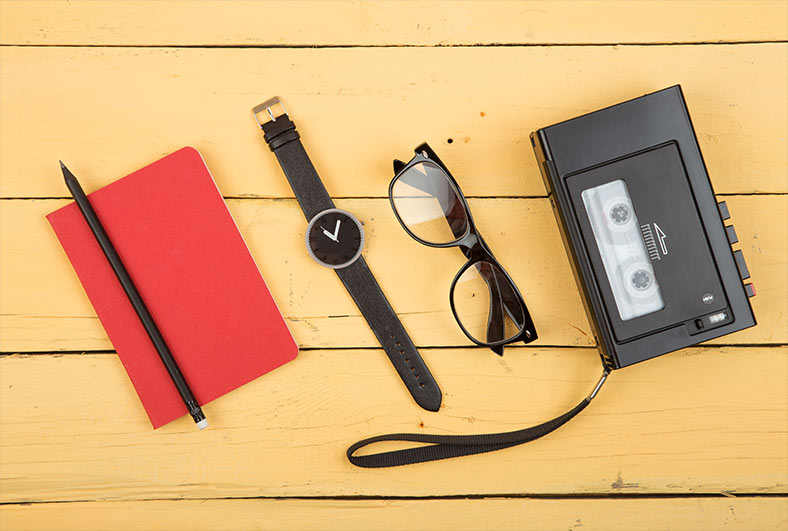Blog / Events / Journalists
The Interview Process

There have been some memorable interviews over the years, especially on the television. From The Duke and Duchess of Sussex’s shocking revelations with Oprah Winfrey, to Richard Nixon’s series of conversations with David Frost about the Watergate scandal.
The best interviews will stick in our minds for years to come, whether they are on the screen or in print. How can you make the most of the interview process? In a recent JournoResources workshop, Kemi Alemoru, a freelance journalist and former culture editor at gal-dem, gave her advice on what to do before, during and after the interview to create something memorable.
Finding someone to interview
Many magazines, newspapers and websites will have dedicated sections for regular interview features. However, it isn’t always easy to find someone to interview. If you have a particular person in mind, then checking out their bios on social media for links to PRs or agent representatives is a good place to start. Media Eye is another good way to identify and connect with talent, and provides celebrity and audience insight and industry news. Plus, there is our very own Journalist Enquiry Service where you can send a request looking for the ‘Celebrity contact or agent’ of the person you’d like to interview.
You should keep an eye on upcoming projects that people might be doing so you can pitch in good time to get an interview with them. Finding emerging talent to interview is another angle to approach, or looking back at underrepresented people that have/had interesting stories.
Preparation and research
As with any journalistic endeavour, a good deal of preparation and research is needed. That is essential when it comes to interviewing someone, especially if you have a considerable amount of time to chat with them. You need to research the person thoroughly. If they are a musician, then listen to their previous albums as well as the current one they’re trying to promote. If they’re an actor, then watch their previous films and TV appearances, not just their current project. It’s good to know as much about their career as possible, including other interviews they may have done with other publications.
You will need to factor in how long you have with the person you are interviewing. If you only have 15 minutes on the phone with them, then you won’t get as much answered as you would compared to an hour in person. That’s why it’s always good to push for as much time and access as possible. Publicists and PRs might ask for the questions in advance – it’s best to avoid this if you can; a scripted interaction and will make the interview less natural.
The Main Event
Once you’ve found someone to interview and have all your preparation done, then it’s time for the main event. You want to dress smart for the interview and be professional. A recording device or app, like Otter.ai, is helpful but if you are interviewing in person, then it’s good to have a notepad with you to jot down what the person is wearing or what they have to drink. This can be beneficial for any extra bits of information you want to include when you write it up.
During the interview, you want to be personable, friendly and empathetic. It should feel like a normal conversation, so you need to listen to the answers and ask follow-up questions. You don’t just want to list off all the questions you have prepared. The interviewee needs to be allowed to speak and they will most likely fill in any silences there are. At the same time, if they don’t answer a question or say ‘no comment’ then that is still an answer.
The questions will need to be interesting. If you are interviewing someone about a new film, they have likely already been asked to talk about their co-stars by other interviewers, so think up new angles you can approach them with. The person might cover an emotional or poignant time in their life so questions like ‘lets explore that more’ and ‘how does/did that make you feel?’ will make it more emotive and this can be later conveyed in the article you write.
The Write Up
Before you start the write up, it’s best to transcribe the interview fully. This will help you during the writing process but it’s good practice for legal reasons too. Then you want to check any facts or dates that were mentioned during the interview and ensure these are all correct.
The tone of voice and style that you write in will vary depending on who you are writing for. An interview in Dazed will be very different to that in the Financial Times due to the target audience. However, a general rule of thumb is that an interview should be 30% description, 30% point of view, 30% narrative and 10% quotes. Writing it in the present tense will also make it more active and interesting to the reader.
If there is a leitmotif running through the article, this will help tie it all together from beginning to end. This can be established straight away in the intro by mentioning their demeanour on the day or their personality, or perhaps even where you interviewed them. This generally applies more to a portfolio style piece or a feature which allows for more context and quotes, compared to a traditional Q & A style interview.
You want to add the quotes that are genuinely interesting, funny or shocking, and show how they feed back into your angle. But it is best to paraphrase quotes where possible to avoid huge chunks of speech. Essentially, a memorable interview will have a good mix of observance and flair.